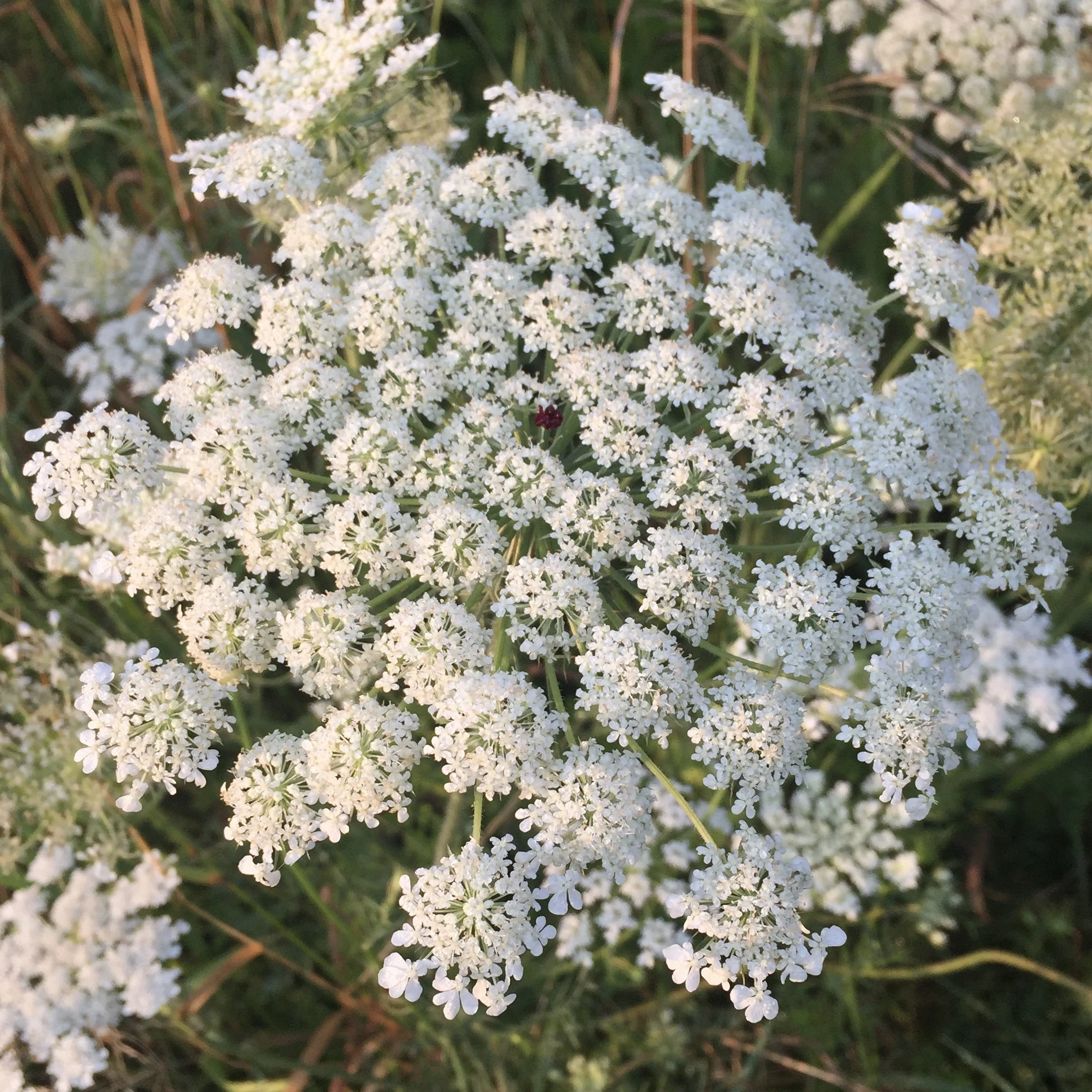Queen Anne's Lace
Queen Anne's Lace
QUEEN ANNE'S LACE
Daucus carota ssp. carota
The ancient progenitor of our modern garden carrots. Presumed native to the Caucasus, this species now grows wild in much of the northern hemisphere, if not the world over. Here in the Northeast it is ubiquitous in ditches, meadows and woodlands. Virtually everywhere. Beloved by hoverflies and butterflies, and magically fragrant en masse. Wonderful as a cut flower and completely impervious to deer.
Queen Anne's Lace is so named for Queen Anne of Denmark. The reason for this honor has been lost to time, though mythical explanations abound. The compound umbels are indeed lacey, but not unlike those of Poison Hemlock, so care must be taken when foraging. True wild carrot is most easily identified by a singular violet flower in the center of each umbel, as well as conspicuously hairy stems. Hemlock typically has smooth stems.
Entirely edible, but unlike its contemporary progeny, it is the flowers and seeds that prove the most esculent. Fresh just-opened flowers produce a fragrant pale pink syrup or jelly with a lovely delicate perfume. Freshly ripened red seeds have an intensely aromatic sweet flavor and may be baked into breads or used to infuse culinary oils. Combine them with sugar using a mortar and pestle and sprinkle atop glazed warm scones. Sublime.
Fully ripened seeds of this species have been valued as a medicinal for millenia. From Appalachia to India, wildcrafted seeds have long been employed as a postcoital antifertility agent. Laboratory studies have since shed light on the relationship between unique terpenoids in wild carrot seeds and the production of progesterone in women. This is not to suggest that wild carrot seeds be used in lieu of widely available and clinically proven contraceptives, though the risks and toxicity are far less serious than some pharmaceutical preparations with similar effect. Careful research is recommended.
Sow these seeds directly into loose weed-free soils in late winter or very early spring. If sown any other time of year, or in regions where winters are mild, light stratification is recommended. Seeds germinate best with some cold. Biennial in nature, plants will not bloom until the second year. If seeds are not gathered, plants will self-sow prodigiously. Establishing self-sustaining colonies of this species is highly recommended in regions where it does not already grow wild. Be sure to sow again in the second year for perennial bloom in subsequent years. Considered a noxious weed in some jurisdictions. Check with your local extension office or DEC before sowing.
There is a great deal of morphological diversity within this species. Additionally, plants are adaptable and profoundly affected by growing conditions. Flower type and height can vary wildly from year to year. Typically, flowering stems range from 1' to 3', although they can grow much taller. Where they have been mown, they will bloom mere inches from the ground. As a weed, it is one of the most persistent.
Finally, it should be noted that these seeds are produced for sowing, not eating. Do not consume these seeds. If you wish to procure the seeds of this species for purposes other than growing please find them elsewhere. We offer these seeds to growers hoping to establish new populations from which to collect seeds.
Packet contains at least 500 seeds.
